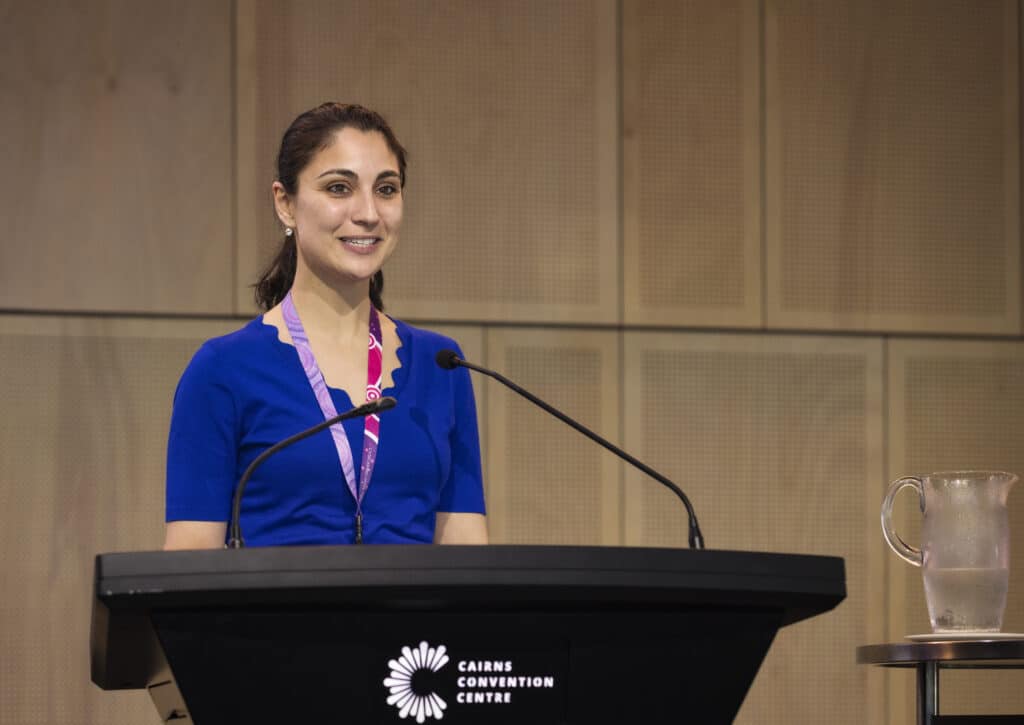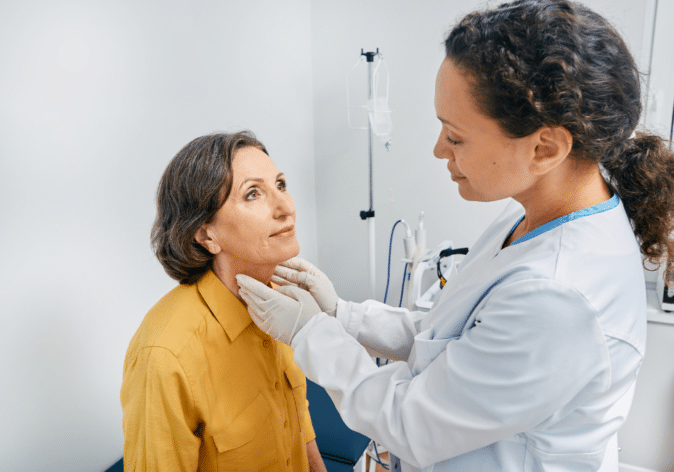Dr Christina Kozul is an accredited general surgical trainee at the Royal Melbourne Hospital who aims to sub specialise in breast surgery. She is passionate about contributing to breast cancer research to improve outcomes for women with ductal carcinoma in situ, also known as DCIS, and breast cancer.
We spoke with Dr Kozul about DCIS and why the risk of local recurrence might be a concern for some women.
“So, DCIS is an early stage of breast cancer. It’s where the cancer cells are contained still within the duct. So, they haven’t evaded outside of the duct, and it accounts for about 25 percent of mammogram-initiated diagnoses.”
“We think that if you leave most DCIS untreated, that most will develop into invasive breast cancer. And that’s why we treat it quite aggressively with surgery, radiotherapy, and endocrine therapy. But we’re getting excellent survival rates now at 99 percent in five years.”
“So we’re thinking, can we identify a patient group that we can reduce their risk or reduce their treatment burden. And the reason why we worry about their risk of recurrence is because if they go on to then have a cancer then obviously that is a life threatening disease, but DCIS in isolation is not life threatening because the cancer cells have not have not exited the duct.”
Listen to the Podcast
We spoke with Dr Kozul about DCIS and why the risk of local recurrence might be a concern for some women.
Can you explain the different treatment options available for DCIS and why might some women choose treatments without radiotherapy?
“So, the primary treatment for DCIS is surgery. So, in my patient cohort, only 2 percent of patients will have breast conserving surgery or what we describe as a lumpectomy. So we just cut out the cancer and we leave the remaining breast. Mastectomy is reserved for patients that have breast cancer, or who have a large burden of disease or multifocal disease, that are not suitable for breast conserving surgeries, they would have a large defect.”
“And some women would just prefer to have the whole breast taken off if they have an increased risk. So, then we use adjuvant radiotherapy to try and decrease the risk of recurrence. And we’ve shown in multiple, randomised control trials that it can reduce the risk of recurrence by 50%.”
“However, it doesn’t alter survival. So, you may have a decreased risk of having a breast cancer in the future, but it doesn’t affect how long you live for. So, some patients are receiving radiotherapy with no benefit. We know that, and despite 70 percent of women worldwide receiving radiotherapy after their breast conserving surgery, endocrine therapy is determined by looking at the patient’s receptor status and diagnosis. That’s the ERPR, or your estrogen receptor positive, or progesterone.”
“If it’s ER positive, so estrogen receptor positive, then we use hormonal therapy to try and decrease that patient’s risk of recurrence. And that can reduce their risk of not only in the breast that they had the DCIS, but also in the other breast by up to 30%.”
“So, patients will have very close follow up in the first couple of years of years after treatment. So, they’ll be seen by their treating team every three to six months for the first two years. Every 12 months they will have some imaging, most of the time it’s a mammogram, depending on what centre you’re in.”
“We use contrast enhanced mammogram at the Royal Melbourne where I work, and those patients will have yearly mammograms usually within their breast service for the first five years. And then potentially they’ll be discharged to a shared care model, which is where the GP organises the mammogram and collects the results, and then only will it escalate to the breast care unit if something is abnormal on that imaging, or from the results.”
“So, women really like that option because they can go to their local GP that they love and they trust, and they don’t have to travel often as far or wait in clinics for many hours.”
What support resources are available to women who have been treated for DCIS, particularly in understanding their risk of local recurrence and managing any concerns they might have?
“So, their breast surgeon will be the primary source of information. They will help guide the lady through what type of treatment would be best for her. And also trying to consider all of the unique patient factors for that patient. So, looking at what matters to them, or what they would prefer, and that in combination with the best available evidence will come together and then the surgeon will make a plan with the patient about what their best treatment option will be.”
“And then if there is an area of concern that the patient has, then we’ve got lots of resources and people we can speak to about trying to give that patient more support.”
“We have a wonderful group of breast care nurses at my institution, and they can really help navigate the patient through the experience. And if there’s any issues, they’re a fantastic port of call to ask and try and navigate through that.”
“Also, I guess the primary treatment team, including the GPs can help as well, but a little bit depends on what the problem is. There’s always someone that can help.”
Support Us
Help us to change lives through breast cancer clinical trials research



